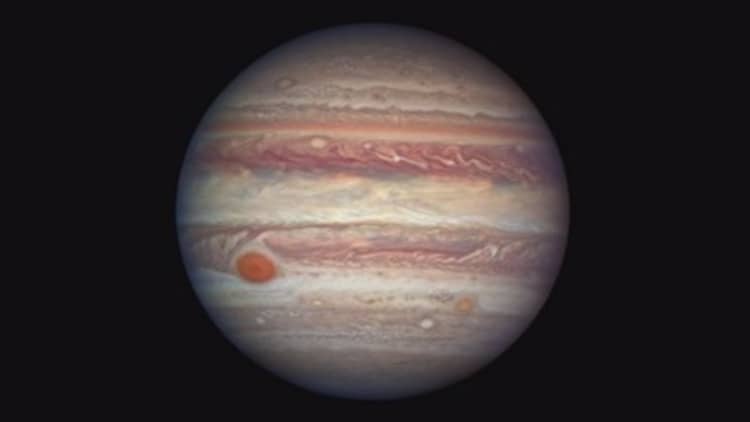
By Jove! Planet Jupiter makes its closest encounter with Earth in more than a year on Friday night, offering rare views of the solar system's largest planet.
Jupiter will be about 414 million miles away from Earth, its closest approach since March 2016.
The planet is now at "opposition," meaning the Earth is directly sitting between Jupiter and the sun.
To the naked eye, the planet will likely appear as the brightest object in the night sky aside from the moon. Jupiter will appear within the constellation Virgo, according to Earthsky.org.
With a pair of binoculars or a telescope, viewers should be able to spot the four so-called Galilean moons, named for Galileo's observation of them, and their movement.
A slightly more powerful telescope should reveal some of the planet's features, including its red spot — the ruddy swirling gas storm on the planet's surface that is by itself larger than Earth's diameter and has been observed raging for more than 150 years.
The Hubble Space Telescope caught a photo of the giant planet as it approached Earth on April 3. NASA noted the Hubble telescope team timed the photo to coincide with NASA's Juno spacecraft's closest position to the planet.
The Juno mission has been steadily releasing its own images of Jupiter since it entered the planet's orbit on July 4.
Jupiter comes this close to Earth every 13 months, so the next opportunity like this will not occur until May 2018.


